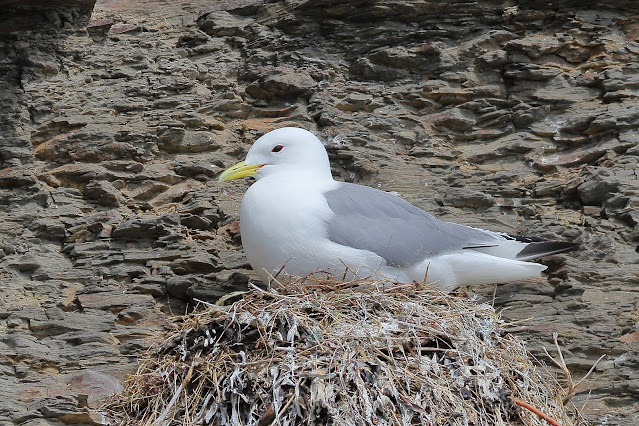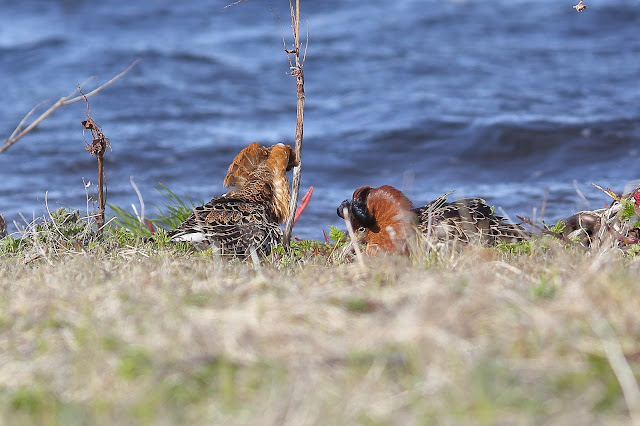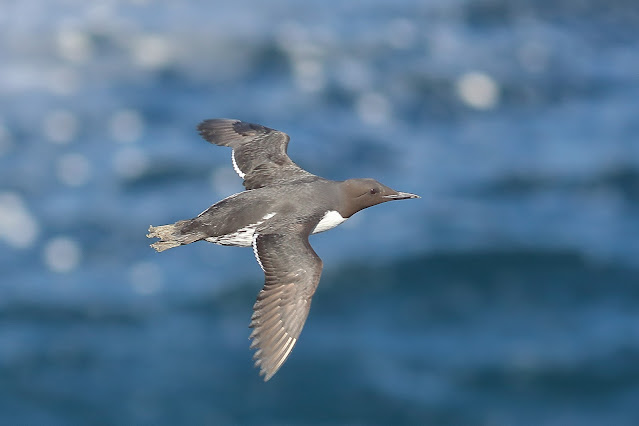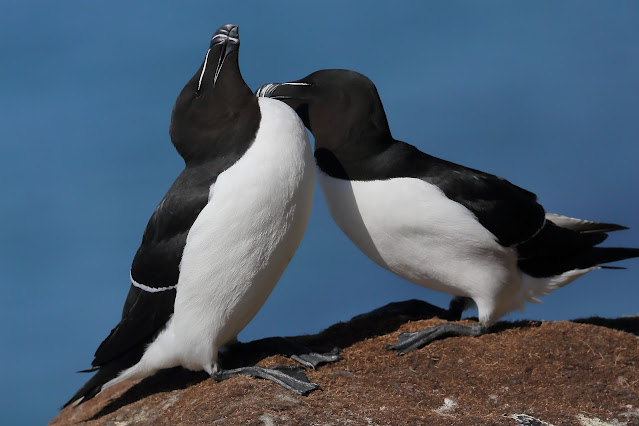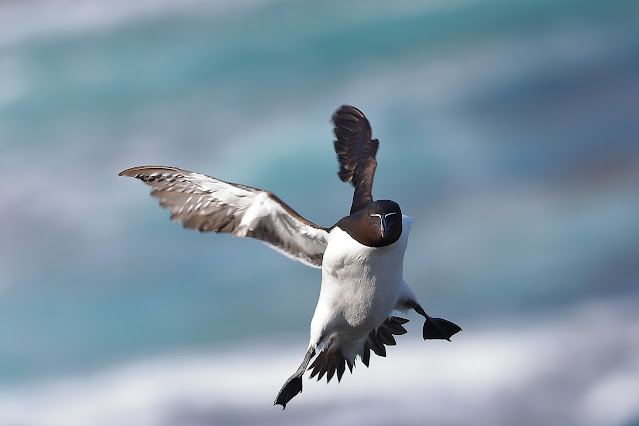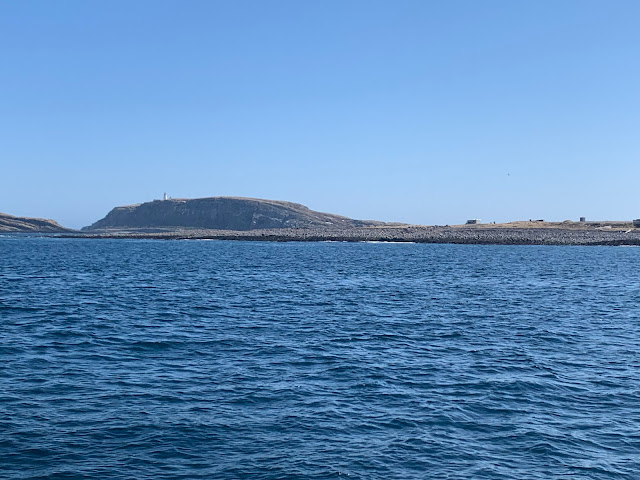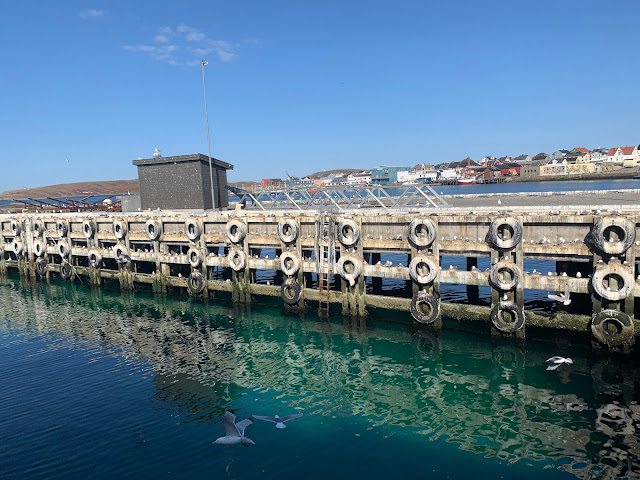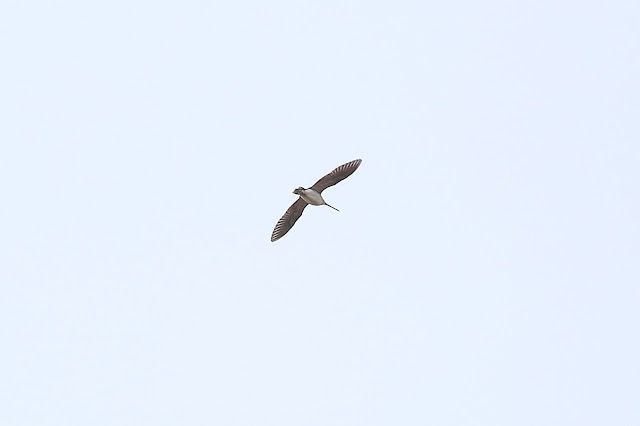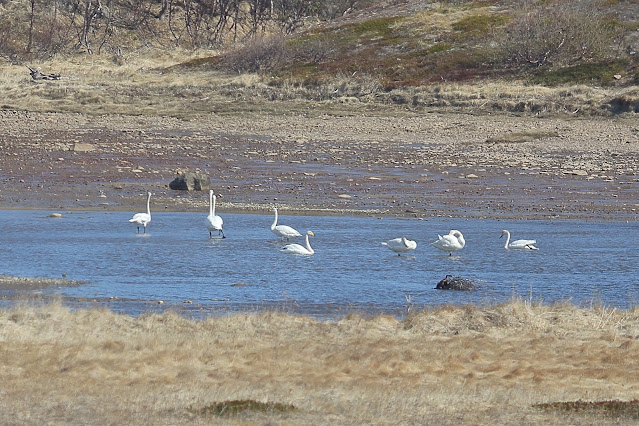Hola una vez más.
Hi again.
Hi again.
En el siguiente enlace podéis ver nuestros próximos viajes fotográficos y de observación de aves y mamíferos nacionales y al extranjero. Espero que os gusten y os animéis a venir conmigo. Una experiencia que nunca olvidareis.
In the following link you can see our next national and foreign Birds and Mammals photographic and observation trips. I hope you like them and I encourage you to come with me. An experience that you will not forget.
En este blog os muestro algunas de las aves que pudimos fotografiar en mi viaje a Varanger, Noruega del 27 de mayo al 5 de junio del presente año. He decidido dividirlo en dos partes para que no sea tan largo.
In this blog I show you some Birds that we were able to photograph on my trip to Varanger, Norway from May 27 to June 5 of this year. I have decided to divide it into two parts so that it is not so large.
En esta primera parte he incluido desde los días 28 al día 31 ambos inclusive. Durante estos díaas visitamos los distintos puntos de observación que hay desde Varangerbunto hasta Hamningberg.
In this first part I have included from the 28th to the 31st, both inclusive. During these days we visit the different observation points from Varangerbunto to Hamningberg.
En nuestro viaje desde Ivalo a nuestro primer hotel en Varanger el día 27 de mayo pudimos ver varios ejemplares de alces, un zorro y una cercana hembra de urogallo que no pudimos fotografiar por estar demasiado cerca de la carretera y se dio a la fuga en cuanto paramos la furgoneta.
On our trip from Ivalo to our first hotel in Varanger on May 27, we could see several specimens of moose, a fox and a nearby female capercaillie that we could not photograph because it was too close to the road and fled as soon as We stopped the van.
On our trip from Ivalo to our first hotel in Varanger on May 27, we could see several specimens of moose, a fox and a nearby female capercaillie that we could not photograph because it was too close to the road and fled as soon as We stopped the van.
28 de mayo:
May 28th:
May 28th:
El día comenzó algo nublado pero enseguida salió el sol y se quedo un día soleado y nada frío para lo que suele hacer allí.
The day started a bit cloudy but soon the sun came out and it was a sunny day and not cold at all for what it usually does there.
En nuestro camino hasta la localidad de Hamningberg hicimos bastantes paradas para observar algunas aves que estaban al lado de la carretera. En la foto un bonito macho de lagópodo comun escandinavo (Lagopus
lagopus).
On our way to the town of Hamningberg we made quite a few stops to observe some birds that were by the side of the road. In the photo a nice male of Willow
Ptarmigan.
Enseguida pudimos ver nuestro primer lek de combatientes (Calidris
pugnax) pero como estaba lejos no nos detuvimos mucho.
We were soon able to see our first Ruff lek but as it was far away we didn't stop long.
Durante nuestra estancia en este área de Varanger vimos mucho pigargo europeo (Haliaeetus
albicilla) pero eran muy difíciles de fotografiar pues no estaban nada confiados.
During our stay in this area of Varanger we saw a lot of white eagles White-tailed
Eagle but they were very difficult to photograph as they were suspicious.
Los renos euroasiáticos (Rangifer tarandus) estaban en correal. Es el único cérvido que tienen cuernos los machos y las hembra y que se puede domesticar.
Reindeer were in velvet. It is the only Deer that both males and females have antlers and that can be domesticated.
Una foca.
A seal.
Un gran bando de serretas grandes (Mergus merganser).
A big flock of Goosander.
Y en esta otro foto un macho de la especie precedente.
And in this other photo a male of the previous species.
Ostrero euroasiático (Haematopus
ostralegus).
Eurasian
Oystercatcher.
Algunas parejas ya habían empezado a incubar.
Some pairs had already started incubating.
Un grupo de porrones moñudos (Aythya
fuligula).
A flock of Tufted
Duck.
Vimos bastantes ruiseñores pechiazules (Luscinia
svecica svecica).
We saw quite a few Bluethroat.
Como he indicado en el párrafo anterior de la subespecie svecica. Fijaos en la mancha roja debajo de la garganta que es la diferencia más notable de esta subespecie.
As I have indicated in the previous paragraph of the subspecies svecica. Note the red spot under the throat which is the most noticeable difference in this subspecies.
Zorzal alirrojo (Turdus iliacus).
Redwing.
Busardo calzado (Buteo lagopus).
Rough-legged
Buzzard.
Dos parejas de ánades frisos (Anas
strepera).
Two Gadwall pairs.
Un bimbo para mi pues no había visto esta especie en el viaje de 2019. El escribano lapón (Calcarius
lapponicus). En la foto un macho.
A lifer for me because I had not seen this species on the 2019 trip. A Lapland Bunting. In the photo a male.
Muy bonito.
Very beautiful.
Andaba con su hembra buscando alimento.
He was with his female looking for food.
Págalo parasito (Stercorarius
parasiticus) morfo claro.
Pale morph Arctic Skua.
Tuvimos la suerte de ver una pareja de alondra cornuda (Eremophila
alpestris).
We were lucky to spot a pair of Horned Lark.
Vimos muchos chorlitos dorados europeos (Pluvialis
apricaria). Que bonitos son en plumaje nupcial.
We saw many European Golden Plovers. How beautiful they are in breeding plumage.
Algunas fotos de los bonitos lugares que visitamos este día.
Some photos of the beautiful places we visited this day.
El hotel de los 5 primeros días que tiene comederos para las aves en el ventanal del comedor.
The hotel for the first 5 days that has bird feeders in the window of the dining room.
29 de mayo:
May 29th:
El día comenzó muy bien pues vimos y fotografiamos a un búho campestre (Asio flammeus) que estaba cazando por los prados.
The day started very well as we saw and photographed a Short-eared Owl that was hunting in the meadows.
Ánsares campestres (Anser
fabalis).
Bean
Geese.
Un macho de lagópodo común escandinavo (Lagopus
lagopus). Durante todo el viaje no vimos ninguna hembra.
A male Willow
Ptarmigan. During the entire trip we did not see any female.
Zarapito trinador (Numenius
phaeopus).
Whimbrel.
Cisne cantor (Cygnus
cygnus).
Whooper Swan.
Chorlito dorado europeo (Pluvialis
apricaria).
European
Golden Plover.
Págalo rabero (Stercorarius
longicaudus).
Long-tailed
Skua.
También había una pareja de patos havelda (Clangula
hyemalis) pero solo tomé fotos al macho.
There was also a pair of Long-tailed
Duck but I only took photos of the male.
En esta foto se puede ver su larga cola.
In this photo you can see its long tail.
Una pareja de porrones moñudos (Aythya
fuligula).
A pair of Tufted
Duck.
En esta charca, había un pareja de colimbos chicos (Gavia stellata) que estaban incubando.
In this pond, there was a pair of Red-throated
Diver that were incubating.
Y un lek de combatientes (Calidris
pugnax) en el mismo sitio del año 2019.
And a lek of Ruff at the same place of the year 2019.
No me voy a detener a explicar nuevamente las diferencias de colores y el cortejo de los machos al haber editado ya un blog con mucho detalle sobre el estos temas de los combatientes (Calidris pugnax). Si lo deseáis podéis verlo pinchando en el siguiente link: El cortejo de los combatientes.
I'm not going to dwell much on courtship and the different colors that males can have having already edited a post with a lot of detail on the courtship of Ruff. If you wish, you can see it by clicking on the following link: Ruff courtship.
Este fue el único macho que vi con la piel verrugosa de la cara rojiza.
This was the only male I saw with warty reddish facial skin.
Esta mañana fue la más fría de todo el viaje pues estaba nublado y hacia mucho viento como podéis ver en este video. Por la tarde salió el sol y subió bastante la temperatura.
This morning was the coldest of the whole trip because it was cloudy and very windy as you can see in this video. In the afternoon the sun came out and the temperature rose quite a bit.
Al medio día nos fuimos a ver una impresionante colonia de gaviota tridáctila (Rissa tridactyla). También había otras aves marinas en el acantilado pero lo más destacado eran las tridáctilas, había muchos miles. En la foto una corneja cenicienta (Corvus cornix).
At noon we went to see an impressive colony of Black-legged
Kittiwake. There were also other seabirds on the cliff but the highlight was the Kittiwake, there were many thousands. In the photo a Hooded
Crow.
Es imposible captar en una imagen las que allí había.
It is impossible to capture in a photo what was there.
Algunas fotos de las protagonistas de la visita.
Some photos of the protagonists of the visit.
Y como era de esperar al haber tantísimas aves criando en los acantilados los depredadores como los cuervos grandes (Corvus corax) andaban al acecho a ver si podían robar algún huevo.
And as expected, since there were so many Birds breeding on the cliff, predators such as Common
Raven were looking for an easy meal.
En una playa cercana había muchísimos charranes árticos (Sterna
paradisaea).
On a nearby beach there were lots of Arctic Terns.
Un págalo parásito (Stercorarius
parasiticus) morfo claro.
A pale morph Arctic Skua.
Por la tarde fuimos a una península que tiene un pequeño lago en su interior. Al llegar pudimos ver a un correlimos de temminck (Calidris
temminckii).
In the afternoon we went to a peninsula that has a small lake inside it. Upon arrival we could see a Temminck’s
Stint.
Y el único bisbita gorgirrojo (Anthus
cervinus) que vimos en todo el viaje. Otro bimbo para mí.
And the only Red-throated Pipit we saw on the whole trip. Another lifer for me.
En la laguna había por lo menos un centenar de falaropos picofinos (Phalaropus
lobatus). Aunque ya los había visto en plumaje de invierno, me gustó mucho ver la belleza de estas aves en plumaje reproductor.
In the lagoon there were at least a hundred Red-necked
Phalarope. Although I had already seen them in winter plumage, I really liked seeing the beauty of these Birds in breeding plumage.
En esta especie la hembra son las que poseen el plumaje más llamativo pues en este caso los roles de la cría están invertidos siendo el macho el que incuba y cría a los pollos.
In this species, females are the ones with the most striking plumage because in this case the breeding roles are reversed, with the male being the one who incubates and raises the chicks.
Macho.
Male.
Otro macho.
Another male.
También había una pareja de silbón europeo (Anas
penelope). En la foto el macho.
There was also a pair of Eurasian
Wigeon. In the photo the male.
Y esta su hembra.
And this is his female.
Y también otro lek de combatientes (Calidris
pugnax). No sabias a quien hacer fotos.
And also another Ruff lek. You didn't know who to take photos of.
Una pareja de liebres árticas (Lepus arcticus) en pelaje estival. Son muy grandes.
A pair of Arctic Hare in summer fur. They are very big.
Gavión atlántico (Larus marinus).
Great black-backed
Gull.
Archibebe común (Tringa
totanus).
Common
Redshank.
Entre todos estos eideres comunes (Somateria
mollissima) había tres de eideres de Steller (Polysticta
stelleri). Se nota en que el macho tiene el pecho más marrón que los comunes y las hembras mas oscuras que las comunes.
Among all these Common Eiders there were three of Steller's Eiders. It is noted that the male has a browner chest than the Common ones and females are darker than the Common ones.
Un bonito macho de serreta mediana (Mergus
serrator).
A nice male Red-breasted
Merganser.
Y esta su hembra.
And this is his female.
Correlimos oscuro (Calidris
maritima).
Purple Sandpiper.
Había bastantes eideres comunes (Somateria
mollissima). En la foto un macho.
There were quite a few Common Eiders. In the photo a male.
Una pareja.
A pair.
Archibebeb común (Tringa
totanus).
Common
Redshank.
Ostrero euroasiático (Haematopus
ostralegus).
Eurasian
Oystercatcher.
Y algunas serretas grandes (Mergus merganser). En la foto un macho y tres hembras.
And some Goosander. In the photo a male and three females.
Y en estas unos machos.
And in these some males.
Algunas fotos de los sitios que visitamos. Como podréis ver aun quedaba bastante nieve.
Some photos of the places we visited. As you can see there was still a lot of snow left.
30 de mayo:
May 30th:
En este día visitamos la Isla de Hornoya. Elegimos el día pues las previsiones meteorológicas eran muy buenas y el día no pudo ser mejor.
On this day we visit the Island of Hornoya. We chose the day because the weather forecasts were very good and the day could not have been better.
Es impresionante la cantidad de aves que en este lugar se reproducen y lo cerca que puedes tener a las aves. Los vídeos has sido tomados con el teléfono móvil.
It is awesome the number of Birds that breed in this place and how close you can have them. The videos have been taken with the mobile phone.
Esta vez hice menos fotos pues al tener ya muchas del otro viaje decidí que era una tontería tener tanta como la otra vez.
This time I took fewer photos because I already had many from the other trip and decided that it was silly to have as many as the other time.
Frailecillo atlántico (Fratercula
arctica).
Atlantic
Puffin.
El viento no era favorable para tomar fotos en vuelo y no hice muchas.
Wind was not favorable for taking photos in flight and I did not take many.
Arao común (Uria
aalge).
Common
guillemot.
Esta es la variedad embridada.
This is the flanged variety.
Gavión atlántico (Larus marinus).
Great black-backed
Gull.
Gaviota argéntea europea (Larus
argentatus).
European
Herring Gull.
Un ostrero euroasiático (Haematopus
ostralegus).
An Eurasian
Oystercatcher.
Alca común (Alca
torda).
Razorbill.
Me hizo mucha ilusión ver a unas cuantas barnaclas cariblancas (Branta
leucopsis) merodeando por la isla.
I was very excited to see a few Barnacle Geese hanging around the island.
También había algunos ánsares comunes (Anser
anser).
There were also some Greylag Geese.
Entre los miles de araos comunes (Uria
aalge) también se podian observar los menos abundantes araos de Brunich (Uria
lomvia). Se diferencian, sobre todo, por tener una linea blanca en la parte superior del pico.
Among the thousands of Common Guillemots one could also observe the less abundant Brunich's Guillemots. They differ, above all, by having a white line at the top of the beak.
Los cormoranes moñudos (Phalacrocorax
aristotelis) estaban criando por todos los lados, incluso en el observatorio.
European Shag were breeding everywhere, even in the observatory.
También vimos un correlimos socuro (Calidris
maritima).
We also saw a Purple Sandpiper.
Y varios bisbitas costeros (Anthus
petrosus).
And several Rock Pipit.
En el puerto de Vardo había varios charranes árticos (Sterna
paradisaea).
At Vardo Port there were several Arctic Terns.
Y un arao aliblnco (Cepphus
grylle).
And a Black Guillemot.
De regreso al hotel hicimos otra parada y pudimos observar a varios eideres comunes (Somateria
mollissima). En la foto un bonito macho.
On the way back to the hotel we made another stop and we were able to watch several Common Eider. In the photo a nice male.
Hembra.
Female.
Una pareja.
A pair.
Pigargo europeo (Haliaeetus
albicilla).
White-tailed
Eagle.
Y este archibebe común (Tringa
totanus).
And this Common
Redshank.
Unas fotos de los sitios que visitamos. En esta foto el anuncio de la isla de Hornoya. Nos costó un poco encotrar la oficina.
Some photos of the places we visited. In this photo the announcement of the island of Hornoya. It took us a while to find its office.
EL barco que nos llevó hasta la isla.
The boat that took us to the island.
La isla visa desde la bocana del puerto de Vardo.
The island is seen from the mouth of the port of Vardo.
Varias vistas de la isla.
Various views of the island.
Vista del pueblo de Vardo desde el pantalán.
View of the town of Vardo from the jetty.
Las gaviotas tridáctilas (Rissa tridactyla) criaban e cualquier sitio y eran numerosísimas.
Black-legged
Kittiwake bred anywhere and were very numerous.
31 de mayo:
May 31st:
Empezamos el día dando un paseo cerca del hotel pues nos habían dicho que era una zona de caza del cárabo gavilán (Surnia
ulula). Uno de los clientes ya lo había vito allí y sacado fotos el primer día. No hubo suerte y no lo pudios ver. En la foto un zorzal alirrojo (Turdus iliacus).
We started the day taking a walk near the hotel as we had been told that it was a hunting area for the Northern
Hawk-owl. One of the clients had already seen it there and taken photos on the first day. No luck and you couldn't see it. In the photo a Redwing.
Pigargo europeo (Haliaeetus
albicilla).
White-tailed
Eagle.
Bisbita pratense (Anthus
pratensis).
Meadow
Pipit.
Agachadiza común (Gallinago
gallinago).
Common
Snipe.
Zorzal real (Turdus pilaris). Durante estos días vimos muchos pero muy asustadizos para hacerles fotos.
Fieldfare. During these days we saw many but too scary to take photos.
Luego continuamos viendo otros lugares de interés. En la foto un grupo de machos de serretas grandes (Mergus merganser).
Then we continue to see other places of interest. In the photo a group of male Goosander.
Y este otro de porrones osculados (Bucephala
clangula) también de machos.
And this other of Common
Goldeneye also of males.
Ostrero euroasiático (Haematopus
ostralegus).
Eurasian
Oystercatcher.
Un andarríos bastardo (Tringa glareola).
A Wood
Sandpiper.
Un macho de eider común (Somateria
mollissima).
A Common
Eider male.
Vimos varias parejas de busardos calzados (Buteo lagopus).
We saw several pairs of Rough-legged
Buzzard.
Cisnes cantores (Cygnus
cygnus).
Whooper Swan.
Aguja colipinta (Limosa lapponica).
Bar-tailed
Godwit.
Dos machos de serreta grande (Mergus merganser).
Two males of Goosander.
Macho de eider común (Somateria
mollissima).
Common
Eider male.
Hembra.
Female.
Correlimos oscuros (Calidris
maritima).
Purple Sandpiper.
Archibebe común (Tringa
totanus).
Common
Redshank.
Luego nos dimos un paseo por un bosque de abedules. En la foto un pardillo ártico (Acanthis hornemanni).
Then we took a walk through a Birch forest. In the photo an Arctic Redpoll.
Vimos un par de ruiseñores pechiazules (Luscinia
svecica svecica).
We saw two Bluethroat.
Me gusta mucho esta ave.
I really like this Bird.
Y para finalizar el día visitamos una desembocadura de un río. En la foto un correlimos común (Calidris
alpina).
And to end the day we visit a river mouth. In the photo a Dunlin.
Andarríos bastardo (Tringa glareola).
Wood
Sandpiper.
Y un correlimos de Temminck (Calidris temminckii).
And a Temminck’s
Stint.
Algunas fotos de los sitios que visitamos.
Some photos of the places we visited.
Si queréis suscribiros a este blog de los viajes que hacemos pincha en el siguiente enlace: Suscribirse y haz clic en ¿Quieres suscribirte a nuestro blog?
If you want to subscribe to this post about the trips we do, click on the following link: Susbcribe and click on: Do you want to subscribe to our blog?
Espero que os haya gustado y hasta pronto.
I hope you like it and see you soon.
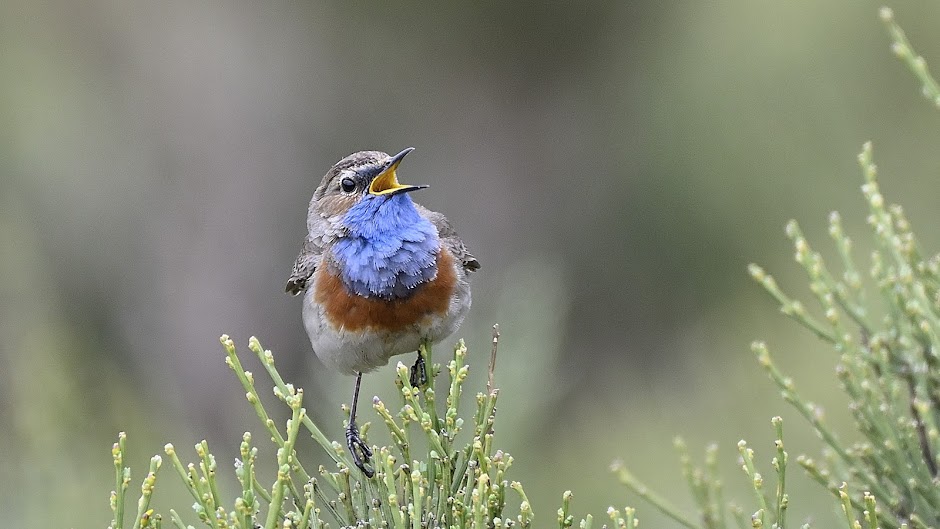





























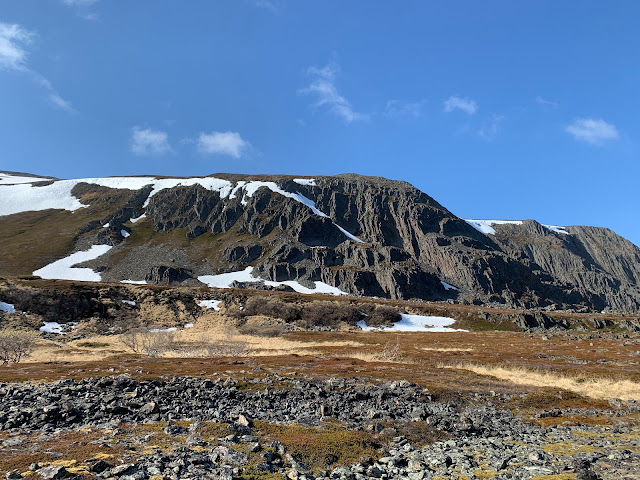


.jpg)






























